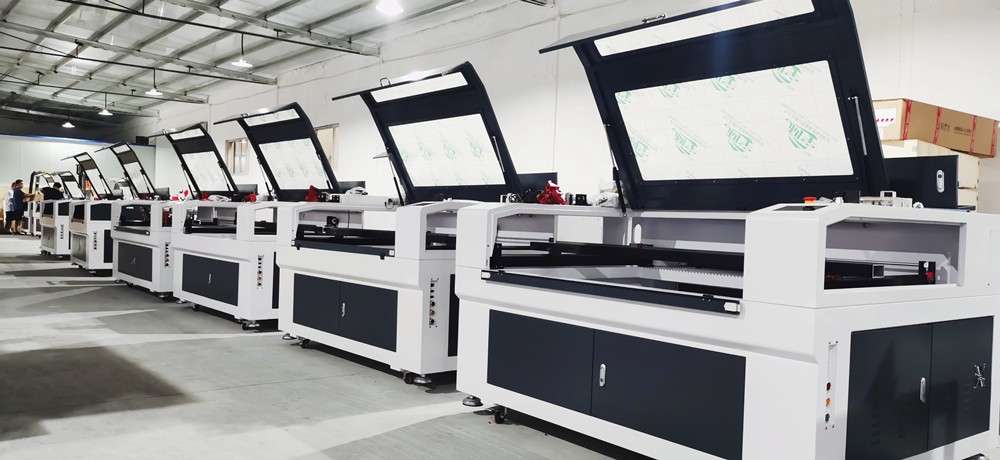Efficiency and precision are paramount in the ever-evolving business landscape. For industries relying on laser engraving machines, maintaining these cutting-edge devices is crucial to ensure they operate at peak performance and consistently produce high-quality results. In this guide, we will delve into the key steps and practices necessary to maintain your laser engraving machine, safeguard your investment, and preserve the integrity of your business output.
Understanding the Basics
Before diving into the maintenance process, it is essential to have a fundamental understanding of how laser metal engraving machine operates. These devices use lasers to engrave, mark, or cut various materials such as wood, metal, and plastic. The precision and speed at which these machines work make them indispensable tools for businesses in the manufacturing, jewellery, signage, and personalisation sectors.
Regular Cleaning Regimen
A clean machine is a well-functioning machine. Dust, debris, and residue from the engraving process can accumulate on the laser’s lens and other critical components, affecting the machine’s performance over time. Establishing a regular cleaning routine is the first step in maintaining your laser engraving machine.
- Power Down and Unplug: Before cleaning, ensure the machine is powered down and unplugged to prevent accidents and ensure personal safety.
- Remove Debris: Use a soft brush, compressed air, or a vacuum with a small nozzle to gently remove accumulated debris from the engraving area, focusing on the lens, mirrors, and other components.
- Clean the Lens: The lens is a critical component that requires special attention. Use a lens cleaning solution and a lint-free cloth to gently clean the lens, ensuring there are no streaks or smudges that could impact the laser’s accuracy.
- Inspect and Clean the Exhaust System: A well-functioning exhaust system is crucial for removing fumes and debris generated during engraving. Regularly check and clean the exhaust fan, ducts, and filters to maintain optimal ventilation.
Calibration and Alignment
The precision of laser engraving relies heavily on accurate calibration and alignment of the machine’s components. Regular checks and adjustments are necessary to ensure the laser beam hits the target precisely.
- Check Beam Alignment: Use the built-in alignment tools provided by your machine to ensure the laser beam is hitting the designated spot accurately. If misalignment is detected, follow the manufacturer’s guidelines to make the necessary adjustments.
- Calibrate Power and Speed Settings: The power and speed settings may drift from their optimal values over time. Periodically check and recalibrate these settings to maintain consistent engraving results.
Lubrication & Maintenance Of Moving Parts
Laser engraving machines have moving parts that require proper lubrication to prevent wear and tear, ensuring smooth operation and longevity.
- Lubricate Rails and Bearings: Check the rails and bearings for any signs of friction or wear. Apply a small amount of lubricant as the manufacturer recommends keeping these parts functioning smoothly.
- Inspect Belts and Pulleys: Belts and pulleys are critical to the machine’s movement system. Regularly inspect them for any signs of wear or slack and replace them if necessary.
Temperature & Environment Control
The operating environment significantly influences the performance of a laser engraving machine. Maintaining consistent temperature and humidity levels is crucial for optimal functioning.
- Control Temperature: Keep the operating environment within the recommended temperature range specified by the manufacturer. Extreme temperatures can affect the laser’s accuracy and the machine’s overall performance.
- Monitor Humidity Levels: Humidity fluctuations can impact the engraved materials and the machine’s components. Use a dehumidifier or humidifier to maintain stable humidity levels, especially in environments which are prone to variations.
Software Updates & Backups
In the digital age, software plays a vital role in the operation of laser engraving machines. Regularly updating the firmware and software ensures your machine benefits from the latest features and bug fixes.
- Firmware Updates: Check for firmware updates provided by the manufacturer and follow the recommended procedures to update your machine’s firmware.
- Backup Settings and Designs: Periodically backup your machine’s settings and any custom designs you have saved. This precautionary measure ensures that you can quickly restore your engraving machine to its optimal state in case of unexpected issues.
Scheduled Professional Servicing
While regular maintenance by operators is essential, scheduling professional servicing at recommended intervals is equally crucial. Professional technicians have the expertise to identify and address issues that may go unnoticed during routine maintenance.
- Professional Inspection: Arrange for a technician to regularly inspect and service your laser engraving machine. They can identify and address potential problems before they escalate, preventing costly repairs and downtime.
- System Upgrades: Professional servicing may also include recommendations for system upgrades or modifications that can enhance the machine’s performance and extend its lifespan.
Maintaining a laser engraving machine is not just a matter of prolonging its lifespan; it’s about ensuring consistent, high-quality results that contribute to the success of your business. By implementing a proactive maintenance routine, investing in employee training, and scheduling professional servicing, you can safeguard your investment, reduce downtime, and position your business for long-term success in an increasingly competitive market.


